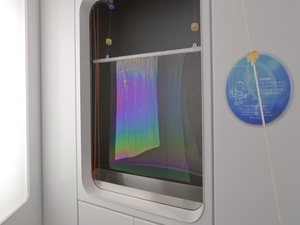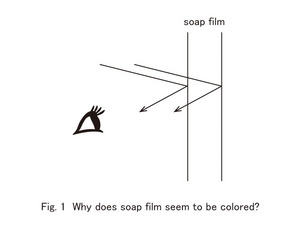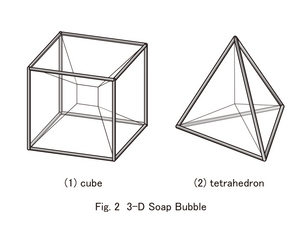Nagoya City Science Museum
TOP > Exhibition Guide > Keyword Search > Starting with "S" > soap > Massive Bubble Film / 3-D Soap Bubble
Massive Bubble Film / 3-D Soap Bubble



Purpose of Exhibition
Water on the ground evaporates and turns into vapor. It soars upwards and makes clouds in the sky. Over time clouds are transformed into rain (water), which returns to the ground and pours into the ocean. Water circulates on the earth. In this "Exploring Water" exhibition, you can deepen your knowledge about this big circulation and characteristics of water through various experiments.
We will explain two exhibits in this "Ocean Stage". Find out about soap film and characteristics of soap bubbles.
Additional Knowledge
[Massive Soap Film]
This device can make a big soap film. It is impossible to make such a big soap film with ordinary soapy water. It is because of the influence of gravity. The soap liquid drips from above to downward and the soap film breaks and bursts from there. It is necessary for liquid to have stickiness that makes it hard to drip downward when making a big film. In this exhibit, special soap liquid which includes additives like saccharide for giving stickiness to liquid is used.
You must notice that the soap film, which should be clear, is actually colored. It seems colored by the light interference.
As for what the light interference is, when the light hits the soap film, two reflections occur on it. One reflection is on the surface of the liquid. The other one goes through the liquid and reflects the surface of the inside, and goes back and forth in the soap film (Figure 1).
Light has the nature of waves. The waves have crests and troughs, and when each crest or each trough over-lap, they become strong waves. On the other hand, when crests and troughs over-lap, they might negate each other and the waves might also disappear. This is the light interference.
The wave works in two ways: the wave reflecting on the surface of the soap film and reflecting on the surface of the inside interfere each other. Various interferences occur due to the wavelength of the light (please regard as the color), the thickness of the soap film and the angle of light that hits. As a result, various colors seem to be pigmented on the surface of the film. In addition, the soap liquid dripping downward makes the film thickness change at every moment. That is why the color appears to be moving.
[3-D Soap Bubble]
When you put the cube or the tetrahedron made with wire into soap liquid and pull out, it is possible to make a mysterious-shaped soap film. It is devised for experiments.
Let's make the soap film with the cubic (same as a dice) shaped frame. When considering it generally, it seems each six sides of the cube make the soap film. However, in fact, 13 soap films are made on the frame. 12 faces of film are pulled internally from 12 sides toward the cubic center, and one more, the thirteenth square of soap film is made at the center (Figure 2 [1]).
Next, in the case of a tetrahedron (a solid which has four triangular faces), the film expands toward two tops of the four tops from one point of the center (Figure 2 [2]).
With the deep observation of two experimental results, you can see that at the point where each soap film intersects, they intersect in three faces. It never becomes four or more faces, even if it were confirmed with other solids. And, the intersection angle is 120°.
It is necessary to understand the idea of surface tension, if you would like to know why it produces such a result. The power of intermolecular force works between the molecules, and it pulls against each other in all directions. This power appears as the power of making the area of the soap film small, that is, the surface tension. When the soap film tries to make the area smallest while touching all frames, it becomes such a shape.
The soap bubble is a sphere. The solid with minimum surface area in the same volume is the sphere, isn't it? It means the surface tension is working.
Article by Koichi Mabuchi
